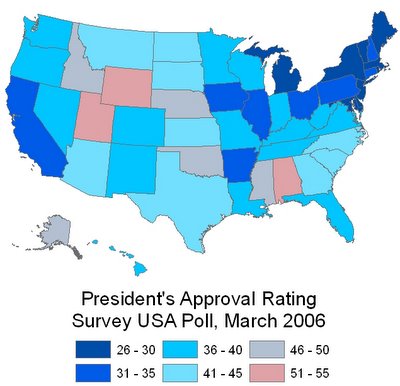eBay Renting
A while back, I was thinking about the fact that I could use eBay as a way to "rent" items such as books, video games or movies.
I would start by buying a DVD used on eBay. When I received it in the mail, I would watch it. Then I would resell it on eBay. If I was fast enough, I could resell it for the same price that you paid (or if you are really good, for more than you paid). Then the only cost to me would be the shipping cost and the eBay fee.
Then I was reading Parade Magazine, and found this guy Daniel Nissanoff who had the same idea:Daniel Nissanoff believes we'll all have clean closets soon. How? Nissanoff, an online entrepreneur, says we're moving from an accumulation nation to an auction culture. That is, people are buying items not to keep but to resell. In his new book, FutureShop, he predicts that more people will buy luxury goods like fancy handbags or $729 Bugaboo strollers (which, after two years, have been resold for $550) with the idea of using them for a time, then selling them to get back part of their value. Already, some manufacturers are so worried about the resale prices of their goods that they bid them up at eBay auctions, Nissanoff tells us.
He has even written a book FutureShop about it:
eBay makes the transactions cost low enough and the potential number of buyers high enough that lots of products now have a second hand market that didn't previously.In his attempt to take eBay into the realm of social theory, Nissanoff leans heavily on "temporary ownership," an endless cycle of consumption where each purchase is looked at not as an acquisition, but as a stopgap that will be auctioned off after its utility has been extracted, and the next bigger and better thing will be partially bankrolled with the proceeds won (at auction, naturally) from the last.
eBay renting, allows for Just-In-Time Consumption. Analogous to Just-In-Time Manufacturing which reduces the need for inventory, JIT consumption removes the need for a personal library of goods. Instead of needing a storage locker for your items, you now sell them on the resale market, and buy something new when you need it. The buy->use->store/throw away model is replaced with the buy->use->resell model.
Personal libraries are replaced by a collective library. Instead of needing the government to allow citizens to collect their money together to fund a public library, now eBay allows individuals to do it directly and become in fact a pseudo-library.
eBay renting allows people to have access to luxury goods that they never would have before. Just like a time-share, you can now use eBay to drive a Ferrari or wear fancy jewelry or a great watch. Instead of owning it for good (and having it spend most of the time being stored), you can just eBay rent it, use it for a short time and be charged just for the transaction costs.
eBay renting is good for the environment. All the items that are purchased on eBay, as opposed to being purchased new, reduce the amount of raw materials and manufacturing needed. Instead all is used is the energy to transport the item from the seller to the buyer. As people purchase new goods with the knowledge they are going to sell them later, they will buy higher quality goods that will last longer (and therefore worth more on the resale market). This also will reduce the amount of virgin materials needed.
For items that you turn over quickly, a service like Netflix makes more sense, as you don't want to have to spend all that time trying to find the right price, listing on eBay, packaging and sending. But there is now a competitor to Netflix called PeerFlix, which uses this concept of eBay renting. All members buy their own DVDs and trade with each other for DVDs they want to watch. Once again, instead of having a personal library of DVDs, you know have a collective library of DVDs with all your fellow PeerFlixers. Instead of paying $10,000 to have a personal library of 5,000 DVDs, you now have access to 5,000 or more DVDs within a week by paying $20 for just 1 DVD, $.39 for shipping, and $1.00 Peerflix fee for each new movie you want to watch.
While eBay renting is good for consumers and the environment, it poses an issue for the content developer/artist/creator, in that they get paid for the original version, but don't get anything on a resale. This is an inherent problem of a digital good that is tied to a physical medium. I think the solution is to shift to a digital distribution preferably in a subscription model (Rhapsody, Audible) so the artist can get their cut on every person that consumes their work.

















